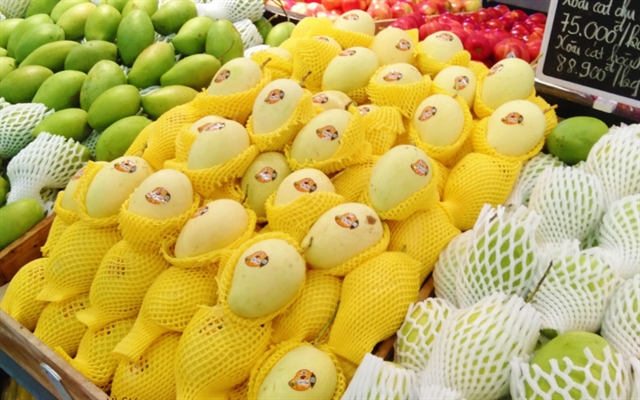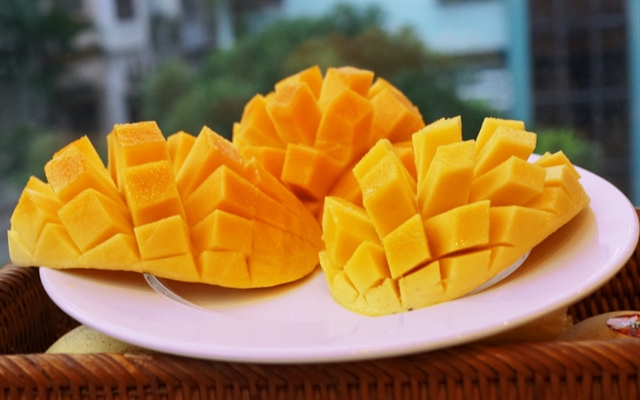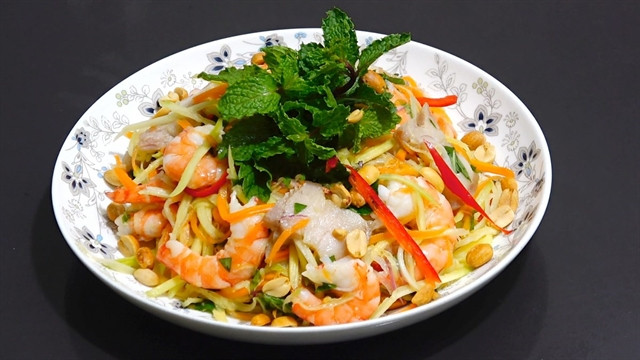In the southeastern provinces of Viet Nam, the succulent xoài (mango) is widely available. However, one particular variety has gained recognition for its superior taste and fragrant aroma - the Cát Chu mango, found in Cao Lãnh Town of the Đồng Tháp Province.

In addition to being enjoyed fresh, this delicious fruit can be incorporated into a variety of dishes, such as gỏi xoài tôm thịt (mango salad with shrimp and bacon), mango smoothies, soft dried mango, green mango dipped in fish sauce, crepe cake mango and mango ice cream.
Huỳnh Văn Thể, a resident, said that while the origin of the name remains unclear, the village's elders claim that the fruit's shape, which protrudes slightly at the stem, inspired the name Cát Chu.
The fruit boasts a truly delectable taste with its thin skin, small seeds, and lower fibre.
Cát Chu mango is also known by another name: xoài tiến vua (Mango Offered to the King). According to legend, King Gia Long (1762-1820) of the Nguyễn Dynasty once passed through Cao Lãnh and was presented with the local speciality. He was so impressed by its taste that it became an annual offering to the king.

Foodies in Hà Nội say that Cát Chu mango is their favourite fruit.
One of them, Nguyễn Thị Huấn, said her family likes this kind of mango very much.
“My parents particularly are interested in the fruits, warning me they only wish to eat Cát Chu mango because it has a sweet fragrance that spreads to every corner of the house and is rich in vitamins.”
“My mother says she always feels as if the sweet coolness of the fruit stays in her throat for a long time, creating a feeling of craving taste," Huấn said, adding that she often orders the fruit.
"My parents wish to enjoy fruits from Cao Lãnh, so I sometimes have to ask my friend in the locality to send me a dozen of kilos. The price ranges from VNĐ75,000-90,000 per kg.”
Huấn said her nephews and nieces are interested in green Cát Chu mango salad soaked in quality fish sauce or mixed with shrimp, pork and roasted peanuts, topped with fresh herbs such as coriander, mint and basil.
 |
| Apart from eating fresh, restaurant chefs and housewives often cook the fruits of many other dishes, including green mango salad mixed with shrimp and bacon topped with herbs. Photo cayxanhhadong.com |
Researchers at the National Nutrition Institute said drinking a cup of mango juice daily helps reduce ageing and prevent ailments connected to the cardiovascular system, indigestion and constipation.
They advise that for a strong digestive system, people should eat a cup of mango juice daily. They also warned, however, that ripe mango has a high sugar quantity so eating it too much would cause harm to human health, particularly for patients with diabetes and of obesity.
Cát Chu mango is among rare mangos conquered by world markets in the US, Australia, Japan and several others, said an official from the Đồng Tháp Department of Agriculture and Rural Development. He added that 80 per cent of Cao Lãnh’s total mango had been exported to these foreign countries.
The Department of Intellectual Property approved Geographical Indication Protection for Cao Lãnh’s Cát Chu mango in 2019, the official said.
Source: VNS